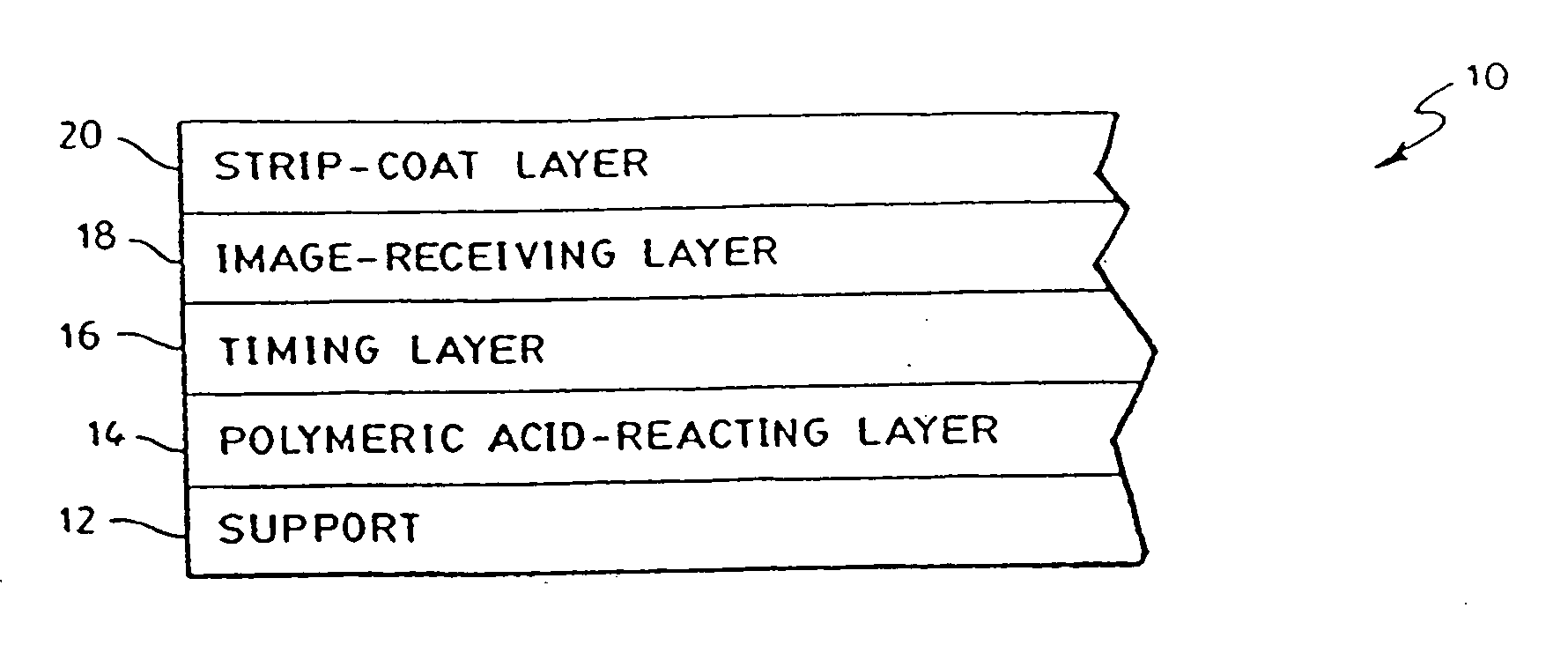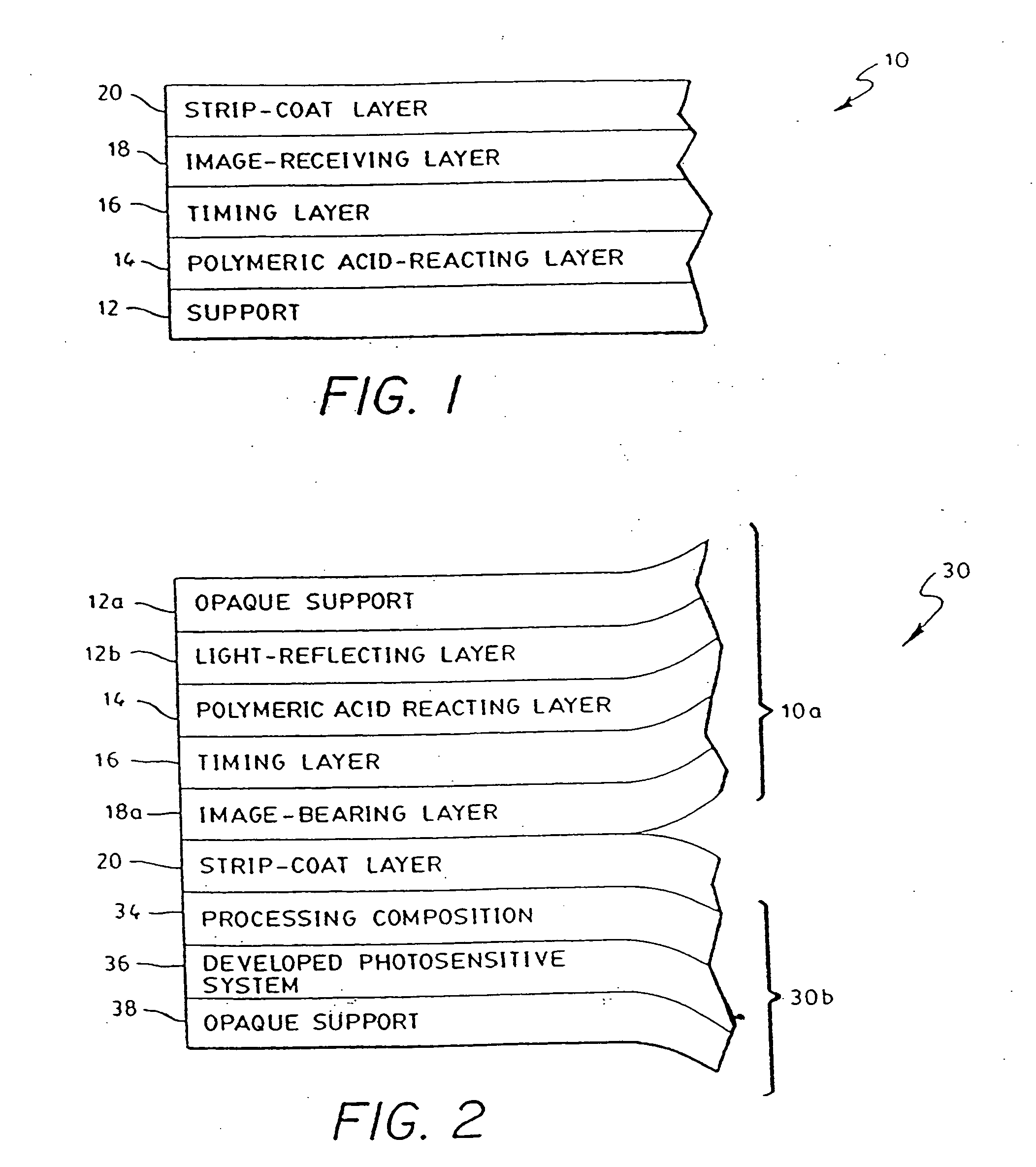Image-receiving element
a technology of image-receiving element and strip-coat, which is applied in the direction of diffusion transfer process, instruments, photosensitive materials, etc., can solve the problems of reducing the effectiveness of facilitation, strip-coat may produce a noticeable haze over the image-receiving element, and progressively thinner strip-coats
- Summary
- Abstract
- Description
- Claims
- Application Information
AI Technical Summary
Benefits of technology
Problems solved by technology
Method used
Image
Examples
examples
[0045] The invention will now be described further in detail with respect to specific preferred embodiments by way of examples, it being understood that these are intended to be illustrative only and the invention is not limited to the materials, conditions, process parameters, etc. recited therein. All parts and percentages recited are by weight unless otherwise stated.
example i
[0046] Diffusion transfer photographic film units A-D according to the invention were prepared wherein the image-receiving element comprised the following layers deposited in succession upon an opaque polyethylene clad paper support: [0047] 1. a polymeric acid-reacting layer at a coverage of about 25,609 mg / m2 (2380 mg / ft2), comprising 9 parts GANTREZ S-97 (a free acid of a copolymer of methyl vinyl ether and maleic anhydride available from the GAF Corp.), and 11 parts AIRFLEX 465 (a vinyl acetate ethylene latex available from the Air Products Co.), and about 2% by weight (based on the amount of Gantrez) of hexamethylmethoxymelamine; [0048] 2. a timing layer coated at a coverage of 4844 mg / m2 (450 mg / ft2) of a 29 / 14.9 / 43 / 10 / 3.2 (parts by weight) pentapolymer of butyl acrylate, methyl methacrylate, diacetone acrylamide, carbomethoxymethyl acrylate and acrylic acid; [0049] 3. an image-receiving layer coated at a coverage of about 3228 mg / m2 (300 mg / ft2) comprising: 2 parts of a terpol...
PUM
| Property | Measurement | Unit |
|---|---|---|
| thickness | aaaaa | aaaaa |
| thickness | aaaaa | aaaaa |
| relative molar ratios | aaaaa | aaaaa |
Abstract
Description
Claims
Application Information
 Login to View More
Login to View More - R&D
- Intellectual Property
- Life Sciences
- Materials
- Tech Scout
- Unparalleled Data Quality
- Higher Quality Content
- 60% Fewer Hallucinations
Browse by: Latest US Patents, China's latest patents, Technical Efficacy Thesaurus, Application Domain, Technology Topic, Popular Technical Reports.
© 2025 PatSnap. All rights reserved.Legal|Privacy policy|Modern Slavery Act Transparency Statement|Sitemap|About US| Contact US: help@patsnap.com



